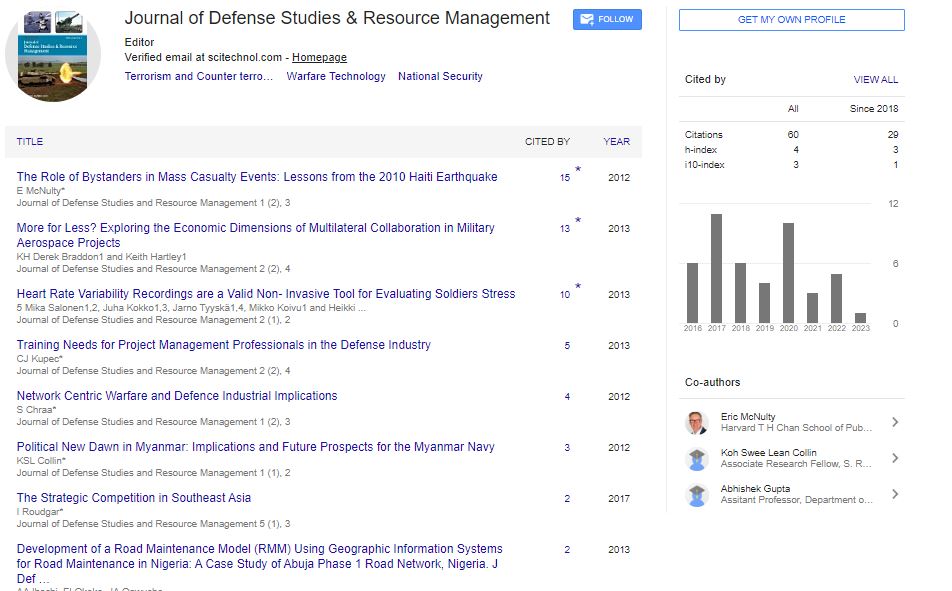Commentary, J Def Stud Resour Manage Vol: 9 Issue: 1
Requirements and Costs Involved in Army
Malorie*
Department of Political Sciences, Northwestern University, United States
*Corresponding Author: Malorie Department of Political Sciences, Northwestern University, United States, E-Mail: malorie@uoc.edu
Received: 05 November, 2021; Accepted: 9 November, 2021; Published: 26 November, 2021
Keywords: Army
Introduction
There is a 2.6 percent increase in global military spending up to a year when gross domestic product (GDP) fell by 4.4 percent (estimated by the International Monetary Fund), largely due to the economic impact of the Covid-19 epidemic. As a result, military spending as part of GDP — military burden reached a global average of 2.4 percent by 2020, up from 2.2 percent in 2019. This is the largest annual increase in military burden since the global financial and economic crisis in 2009.
Although the cost of war is increasing worldwide, some countries are also making clear the amount of money planned for the military to respond to the epidemic, in countries like Chile and South Korea. Several others, including Brazil and Russia, have spent far less money than their first 2020 military budget.
'The recent rise in US military spending may be largely due to significant investment in research and development, as well as a number of long-term projects such as modernization of US nuclear weapons and the purchase of large arms,' shows growing concern over perceived strategic threats. With regard to weapons and equipment, the Armed Forces requires the following to replace old equipment as part of a power development program:
The infantry, which continues to be employed in counter-terrorism operations, urgently needs to be empowered with the provision of new generation lightweight assault rifles, bulletproof jackets and helmets, hand-held photographs (HHTI) and a host. Of other modern weapons such as carbines, machine guns, rocket launchers, ATGMs, ammunition, night vision, radio sets and better rear packs to replace with obsolete weapons and equipment. In addition, infantry will need to reduce the number of General duty (GD) troops and replace them with specialists. At that level, it should be seriously considered that most of the infantry will be turned into Special Force wars. In addition, the fourth company of each infantry is in need of a special operations company.
Additional prices for modern technology such as T-90 tanks and ICV powered overnight, equipped with long-distance ATGMs, need to be installed first. Older T-72 tanks and ICVs need to be updated and technically upgraded as soon as possible. Future Ready Combat Vehicle (FRCV) and Future Infantry Combat Vehicle (FICV) projects must be intensified so that the next generation of modern replacements can be included within the next 10 years.
The discovery of three groups of Apache helicopters attacking Army Aviation is reportedly approved, according to an Air Force order. In addition, Kamov's replacement helicopters, traditional helicopters (LUH) and helicopters (LCH) must be closely monitored so that reliable helicopters can be delivered to the Armed Forces in good time.
Army AD equipment is completely redesigned. Various Army AD weapons acquisition projects — for all types of aerial missile systems and the older generation system development process must be given new inputs to make these happen sooner rather than later. Military engineers need to be provided with new generation bridges, mine implants and mine removal equipment. Where possible, old equipment should be upgraded traditionally.
Acknowledgement
None
Conflict of Interest
None
 Spanish
Spanish  Chinese
Chinese  Russian
Russian  German
German  French
French  Japanese
Japanese  Portuguese
Portuguese  Hindi
Hindi 